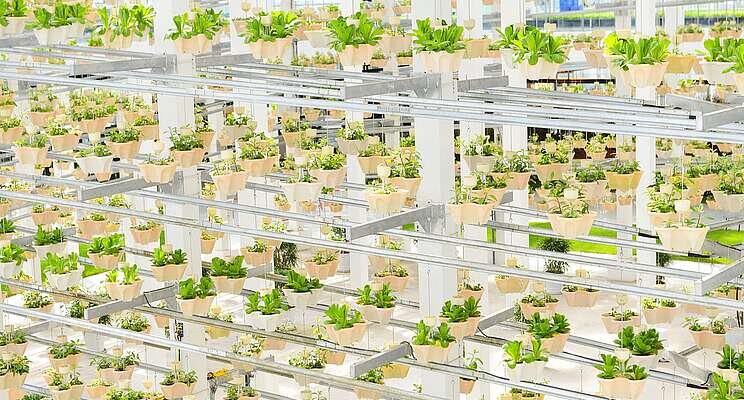How vertical farming can supplement the food supply chain
Added on 16 November 2021

Indoor farming allows for certain foods to be grown hydroponically in a closed-loop environment year-round. "These systems often recirculate water, which can be more efficient than how water is used for other types of crops," Church explained. "Light and temperature can also be controlled, and since there is no exposure to pests, no chemistry is needed."
Perhaps one of the most significant benefits of such farms, however, is that they can be built anywhere. That means food such as leafy greens can be grown closer to population centers.
Because it travels fewer miles to the plate, the taste and texture of the output from indoor farms is often better than conventionally grown produce.
"Higher-end chefs who like to have access to the freshest produce possible are also very interested in this trend," Church said.
While indoor and vertical farming will not feed the world, Church believes it can supplement the supply chain. One leader in indoor farming, for instance, recently began construction of a research center in Abu Dhabi, UAE. "This is the perfect spot for a vertical indoor farm," he explained. Due to its arid environment, the conditions are not suitable for outdoor growing, so the country has historically imported its produce. Recently the UAE's government publicly stated it wants to become more sustainable — and this solution will go a long way in helping it achieve that. "Bringing fresh food to people who might not otherwise have access to it in this way is good for the country and good for consumers," Church said.
There are environmental and social benefits to indoor farming as well. "In addition to potentially reducing carbon impact because food has to travel fewer miles to get the consumer, indoor farms can minimize the risk of supply chain disruptions like we saw during the COVID-19 pandemic," Church said. They can also bring jobs to people who have limited opportunities. This was the case when a startup built a 2.76 million square foot facility in Kentucky, creating jobs in an area hard hit by the coal industry's collapse.
What's next?
Currently, the technology behind indoor and vertical farming is an expensive proposition — making it difficult to predict how scalable it is in the near term. However, as the cost of that technology comes down, the business model will become more profitable. "I liken it to the GPS systems that are in all commercial farming equipment today," Church said "At the onset, it was costly to outfit tractors and combines with GPS, but it built the foundation for new, more cost-effective technology. I think we'll see the same will happen here."
Click here to read more.
Image of Yong Wang from Pixabay
Source: GreenBiz
More news















